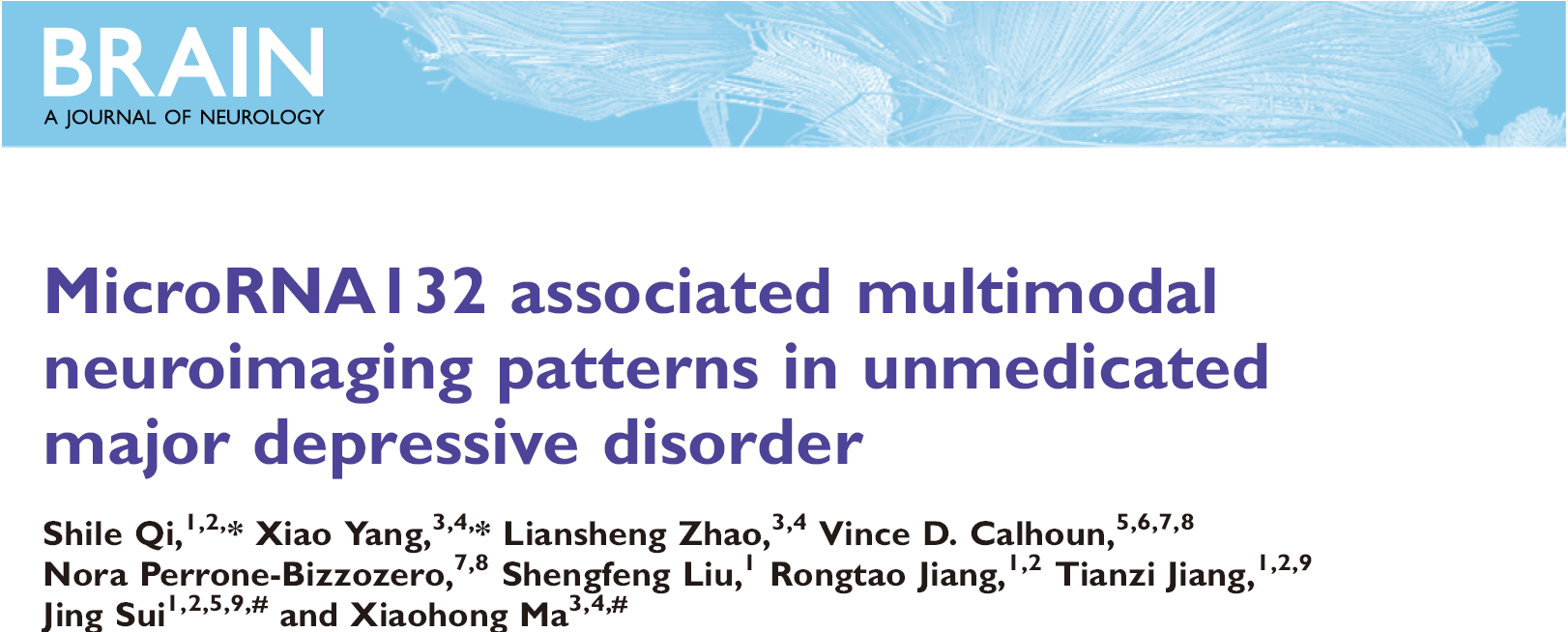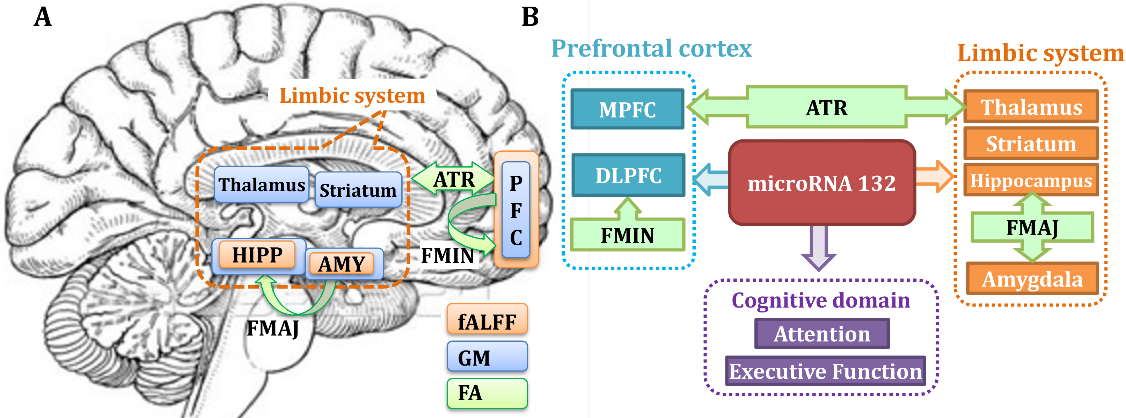MicroRNA132 associated multimodal neuroimaging patterns in unmedicated major depressive disorder

1 Brainnetome Center and National Laboratory of Pattern Recognition, Institute of Automation, Chinese Academy of Sciences, China
2 University of Chinese Academy of Sciences, China
3 Psychiatric Laboratory and Mental Health Center, the State Key Laboratory of Biotherapy, West China Hospital of Sichuan University, China
4 Huaxi Brain Research Center, West China Hospital of Sichuan University, China
5 The Mind Research Network, Albuquerque, NM, USA
6 Department of Electronical and Computer Engineering, University of New Mexico, USA
7 Department of Neurosciences and Psychiatry, University of New Mexico, USA
8 Department of Psychiatry, Yale University, CT, USA
9 CAS Centre for Excellence in Brain Science and Intelligence Technology, Institute of Automation, Chinese Academy of Sciences, China
Abstract:
There is compelling evidence that epigenetic factors contribute to the manifestation of depression, in which microRNA132 (miR-132) is suggested to play a pivotal role in the pathogenesis and neuronal mechanisms underlying the symptoms of depression. Additionally, several depression-associated genes [MECP2, ARHGAP32 (p250GAP), CREB, and period genes] were experimentally validated as miR-132 targets. However, most studies regarding miR-132 in major depressive disorder are based on post-mortem, animal models or genetic comparisons. This work will be the first attempt to investigate how miR-132 dysregulation may impact covariation of multimodal brain imaging data in 81 unmedicated major depressive patients and 123 demographically-matched healthy controls, as well as in a medication-naive subset of major depressive patients. MiR-132 values in blood (patients4controls) was used as a prior reference to guide fusion of three MRI features: fractional amplitude of low frequency fluctuations, grey matter volume, and fractional anisotropy. The multimodal components correlated with miR-132 also show significant group difference in loadings. Results indicate that (i) higher miR-132 levels in major depressive disorder are associated with both lower fractional amplitude of low frequency fluctuations and lower grey matter volume in fronto-limbic network; and (ii) the identified brain regions linked with increased miR-132 levels were also associated with poorer cognitive performance in attention and executive function. Using a data-driven, supervised-learning method, we determined that miR-132 dysregulation in major depressive disorder is associated with multi-facets of brain function and structure in fronto-limbic network (the key network for emotional regulation and memory), which deepens our understanding of how miR-132 dysregulation in major depressive disorders contribute to the loss of specific brain areas and is linked to relevant cognitive impairments.

Fig. 1 Summary of our findings about miR-132 dysregulation in unmedicated depression
